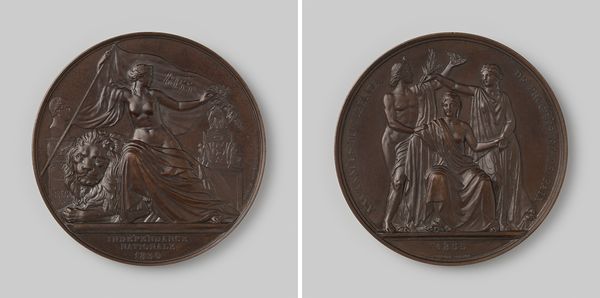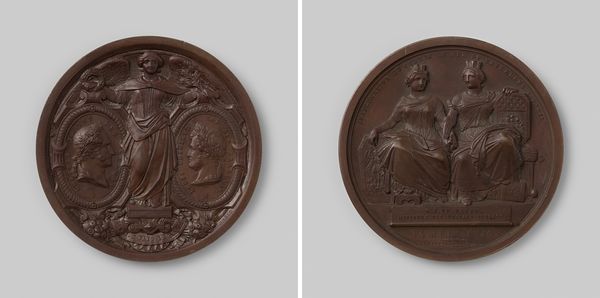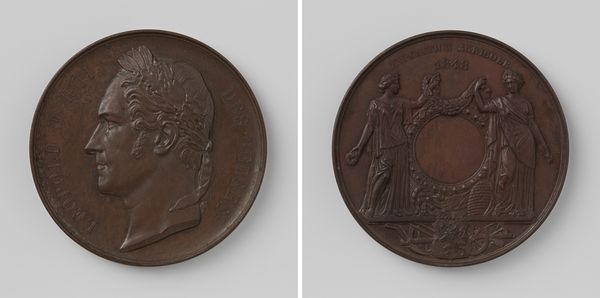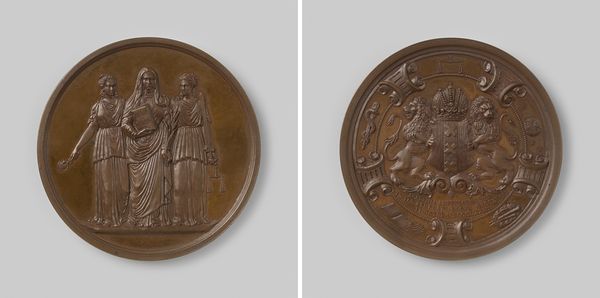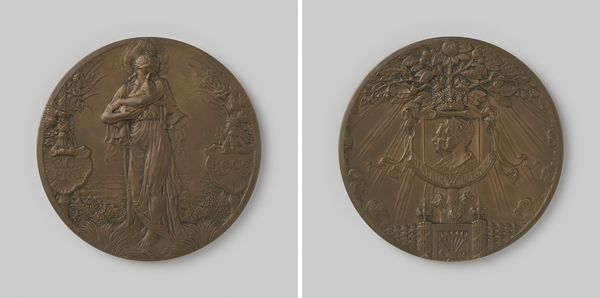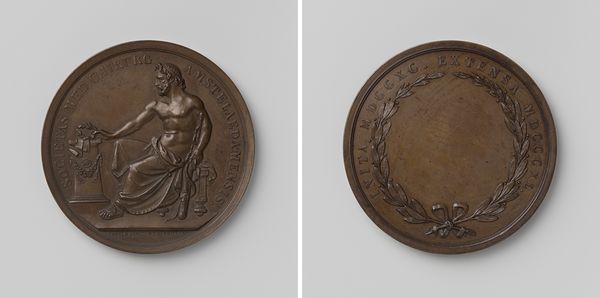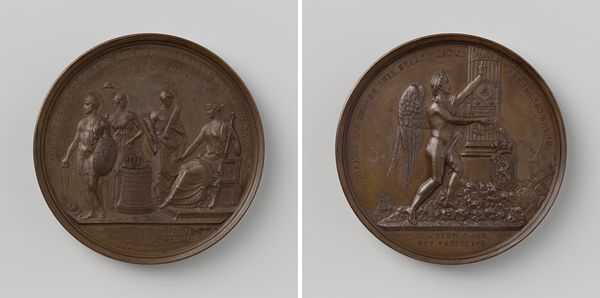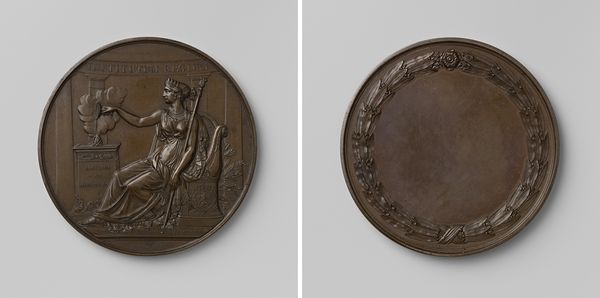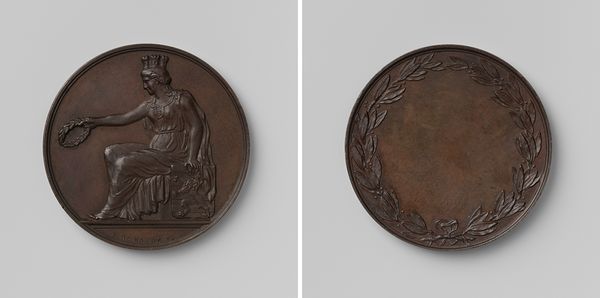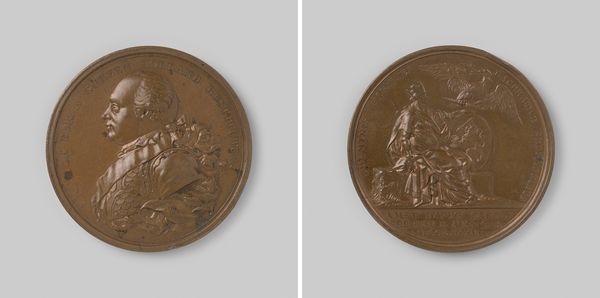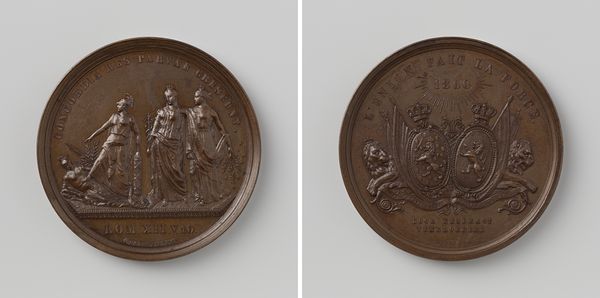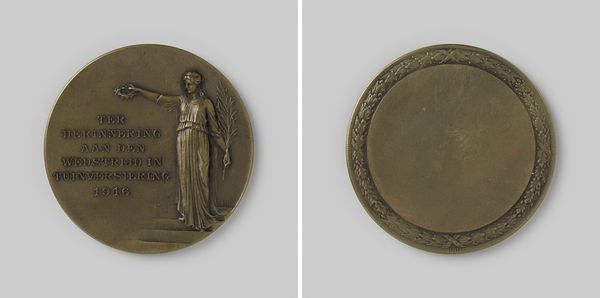
Vijfentwintigjarig regeringsjubileum van Willem III, koning der Nederlanden 1874
0:00
0:00
Dimensions: diameter 6.5 cm, weight 1427 gr
Copyright: Rijks Museum: Open Domain
Curator: So, this medal was created in 1874 by Edouard Louis Geerts to commemorate the twenty-fifth anniversary of the reign of Willem III, King of the Netherlands. Bronze relief seems an apt medium for such an occasion. What are your initial impressions? Editor: It strikes me as… overtly celebratory, even propagandistic. I mean, look at the idealization: the neoclassical figures, the laurel wreaths. It's less about the actual reign of Willem III and more about crafting a very specific image of power and legacy, isn’t it? Curator: Absolutely. Consider the context: this piece aimed to solidify the monarchy's image, particularly in an era of burgeoning republicanism across Europe. Note the careful placement of symbolic elements meant to communicate stability, strength, and divine right to rule. Editor: It’s interesting how that need for public approval manifests, though. The relief depicts, on one side, Willem crowned by figures personifying allegorical virtues, while the reverse shows muses presenting him with… lawful texts? It feels almost desperate, that need for legitimacy spelled out so literally. Curator: Perhaps, but also astute. Willem III’s reign occurred during the rise of constitutionalism. By depicting Law so prominently, Geerts underscored that Willem III governed, at least nominally, under legal frameworks. It's as much about managing the narrative as reflecting any genuine truth. Editor: Yet, what narrative are we choosing to inherit and re-tell? In centering a ruler within what appear to be Greek Gods, we have to recognize the implications for colonized regions who, perhaps, are far removed from Dutch nobility in a material and figurative sense. I just don't see how these celebrations and accolades of a neo-classical-approved, yet otherwise socially removed class of people serve our future or, rather, remind us of an archaic history rooted in division and inequity. Curator: You raise crucial questions about historical narratives and their resonance today. This work reflects a very specific historical moment. By acknowledging its biases, we gain insight into the complex role art plays in both mirroring and shaping societal values. Editor: Precisely! Engaging with such imagery demands critical consideration, questioning whose stories are amplified and whose are sidelined in the relentless march of... sanctioned memory. Curator: Indeed. It serves as a reminder that, as observers, we must actively interrogate these manufactured, and quite permanent, realities. Editor: Let us always aim to use the past not just to appreciate aesthetics but to construct a more just future.
Comments
No comments
Be the first to comment and join the conversation on the ultimate creative platform.
